The Via Tornabuoni
This article of mine was published originally by Fathom
When I first lived in Florence in the 1980s, I should have photographed the historic 19th-century cafes on Via Tornabuoni. Because when I next made Florence my home two decades later, they were gone.
Although I was a backpacking waif in the ’80s, totally ignorant of Florentine history, if someone had walked me down the elegant street and pointed out the striking Liberty-style cafes and told me their tales, I would not have believed that places of such distinction would eventually be sacrificed to give way for designer boutiques.
In the 1800s, the cafes on Via Tornabuoni were punti di riferimenti, meeting places (literally, “reference points”) that were especially popular with foreigners, particularly the British.
So popular that the street became known as the Salotto del’ Europa, the drawing room of Europe.
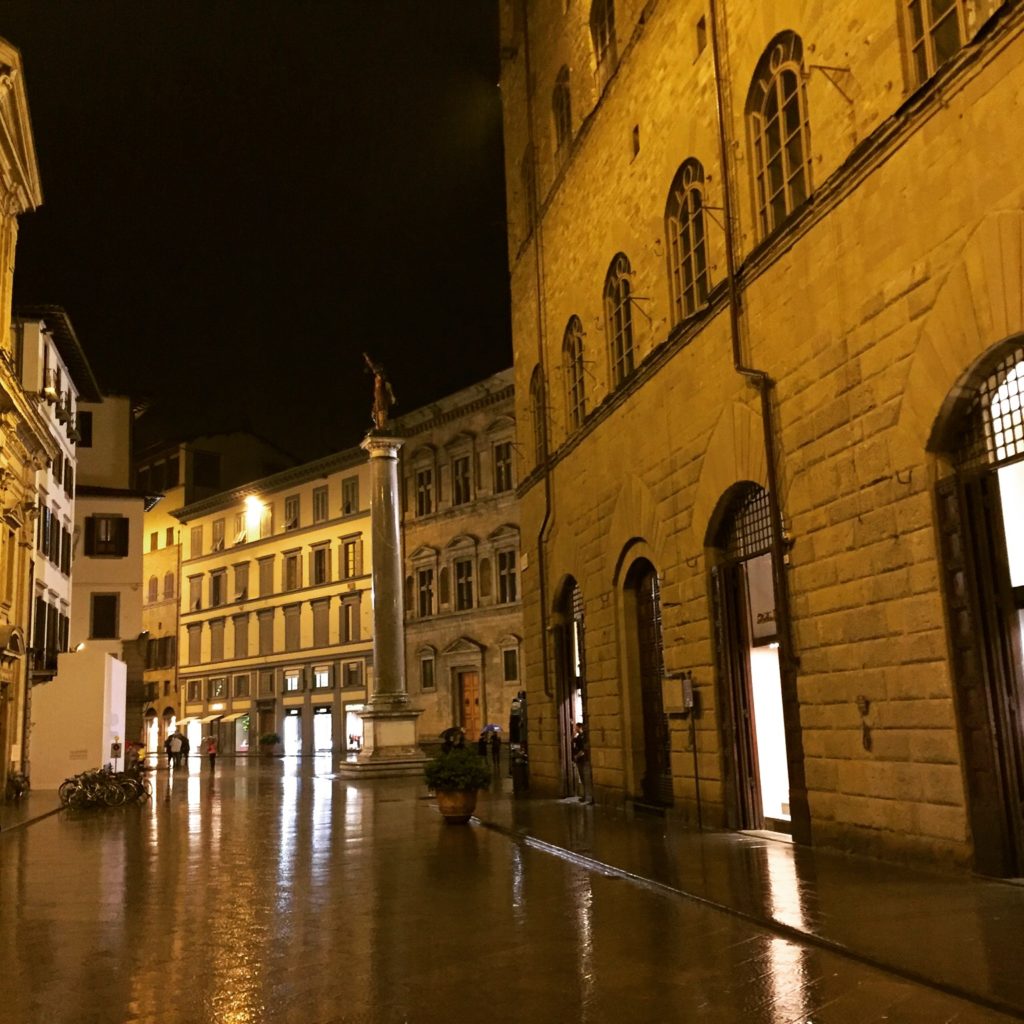
In the inter-war years of the 20th century, the flourishing English community convened at Gran Caffé Doney, located a short walk across the Arno from the British Consulate.
A group of quick-tongued expat ladies known as the Scorpioni (“scorpions”) were the regulars who inspired the film Tea with Mussolini.
When Mussolini invaded Ethiopia, the British residents of Florence made their disagreement known, and the Fascists attacked Doney. When World War II broke out, the Scorpioni were arrested and taken into custody in the Tuscan hilltown, San Gimignano. Doney closed in 1986.
Caffe Giacosa, another elegant Via Tornabuoni institution that I had long admired for its aged mahogany and Liberty decor, was founded in 1815. A favorite meeting place of locals like Prince Ruspoli, it was here that the Negroni cocktail was invented in the 1920s. So much history. So much style. So different from bars and coffee shops in my native California. Today, the location is a boutique of Florentine designer Roberto Cavalli; the café within is a smaller version of the original.
Why were these historical places being sacrificed in a city so proud of its patrimony?
Determined to learn more, I interviewed knowledgeable locals for a book I planned to write.
I began with Paolo Milli, the owner of Seeber, the large and beloved Via Tornabuoni bookstore founded in 1864. We met in 2002, when Seeber was due to close and Max Mara was about to move in. I was in the nick of time.
“The ecosystem of Via Tornabuoni has totally, tragically changed,” Paolo told me as he led the way up a narrow flight of stairs to his office above the shop.
With disheveled hair and a loose-fitting wool sweater, he looked like the movie version of a bookstore owner. He spoke rapidly, his tone showing a deep concern for the subject.
“Do you remember Doney?” he asked, gesturing in the direction of the Arno. “It was founded in 1827 and known for its hot chocolate and gelato. Cercherini, a wonderful shop that sold instruments across the street, is also gone. We had a collaboration with them, we hosted a concert with them here in the store.” Paolo grinned as he told me about moving the piano across the street.
“You see, we all used to know one another here. These stores had a feel of authenticity. The new stores…” He let out a sigh. “They lack this flavor. Have you seen the new Giacosa that Cavalli opened?”
“I haven’t gone in,” I replied.
“E’ una cosa vulgare!” he exclaimed. It is a vulgar thing.
I laughed as he went on to explain that for Cavalli to get the license to destroy the historic cafe and put his designer shop in its place, he had to agree to reopen Giacosa. “So what stands now is a large designer store, the same one could find in Milan or Paris, and a small vulgar place at the back with Giacosa’s name on it.”
“Profumeria Inglese is gone, too,” I added, referring to the beautiful pharmacy with Renaissance arches, where talcum powder was invented.
“The city has become a playground for tourists,” Paolo said. “We cannot turn back now. Big money has won. Armani spends 35 million euro for the rent next door and gave the owners of the original shop 8,500 million euros to go away. Those of us who care about the authenticity of the city are no match for this kind of money.”
Paolo’s bookstore would be moving to a location on Via Cerretani.
“We couldn’t stay here anyway, the neighborhood has changed too much. In order to stay, we’d have to offer calendars in Japanese. This store has been a meeting place for the city for almost a century and a half. D. H. Lawrence, Hemingway, Hitler — they all stopped in here. The store can never be the same on Via Cerretani.”
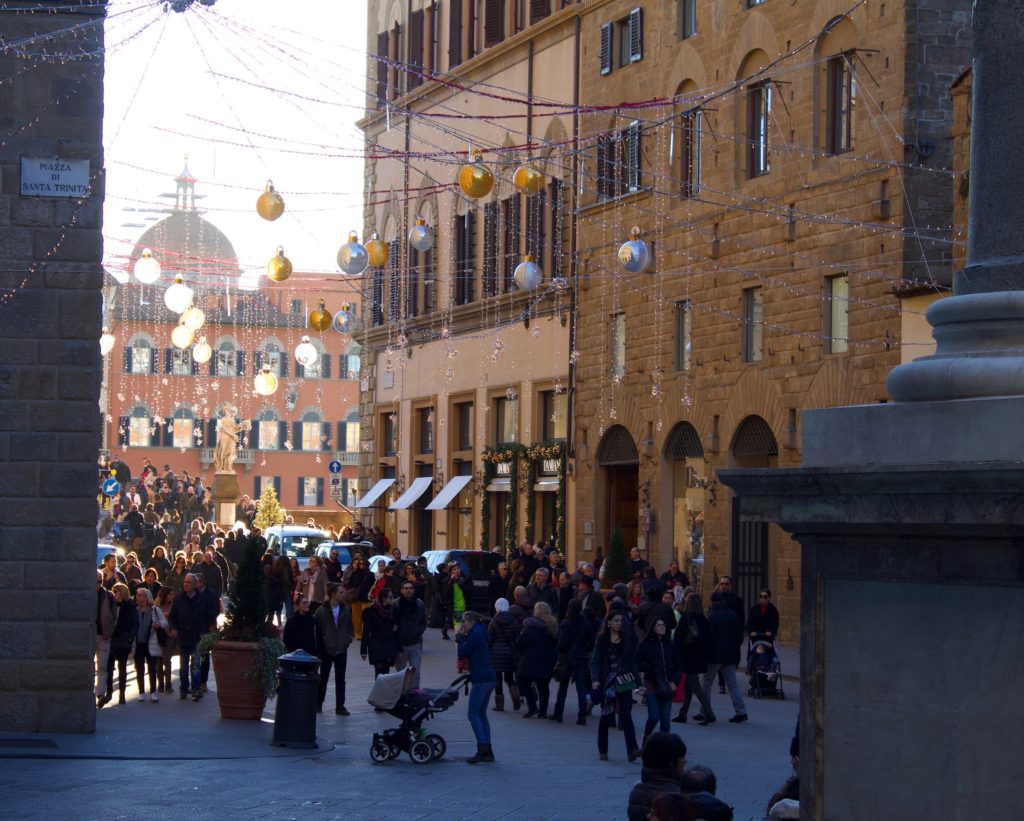
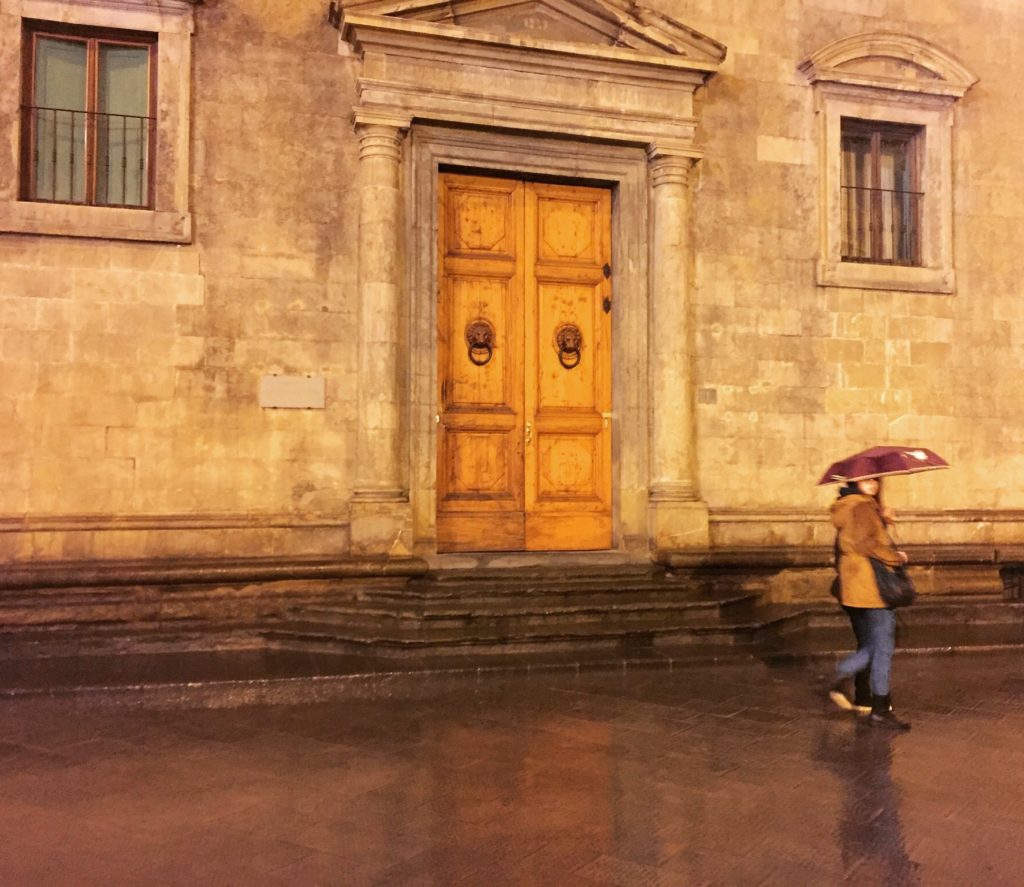
A few days later, when I visited Hotel Beacci Tornabuoni to make reservations for my clients, the owner invited me in for a coffee. We settled into mint-green sofas in the high-ceiling parlor, which looked like a drawing room in a Renaissance villa with its fireplace, bookshelves, massive tapestries, and inlaid parquet floor.
Signore Bechi, a quiet man with delicate hands, told me, “Yes, big money is taking away some of our patrimony. But while money can be helpful, it is not the finality of life. Florence is a world property; it is no longer just for Florentines. It is a masterpiece for all the world, and this city must be preserved for all the world.”
“It seems to me,” I offered, “that even though millions of visitors want to shop, it’s crucial to preserve the city’s history, which is…” I paused, looking for the word in Italian, “unparalleled.”
“People must come here not to buy Florence but to let Florence give them something deeper, which they can have for the rest of their lives. A love for Florence, like what you have,” he looked at me earnestly, “is not something you can buy. Florence is not only a big shop. It is a place where you can become a better person.”
Rising to walk to a bookshelf, Signore Becchi said, “There’s a book I think you’d be interested in.” Written in 1995, it was about Via Tornabuoni, I opened it and read:
“No one can know Florence unless they’ve seen the Seeber bookstore. A jewel that has withstood the test of time and survived the historic events of our country, it remains a lively meeting place today, a place filled with memories and known worldwide.”
Would anyone ever write something like that about Max Mara?
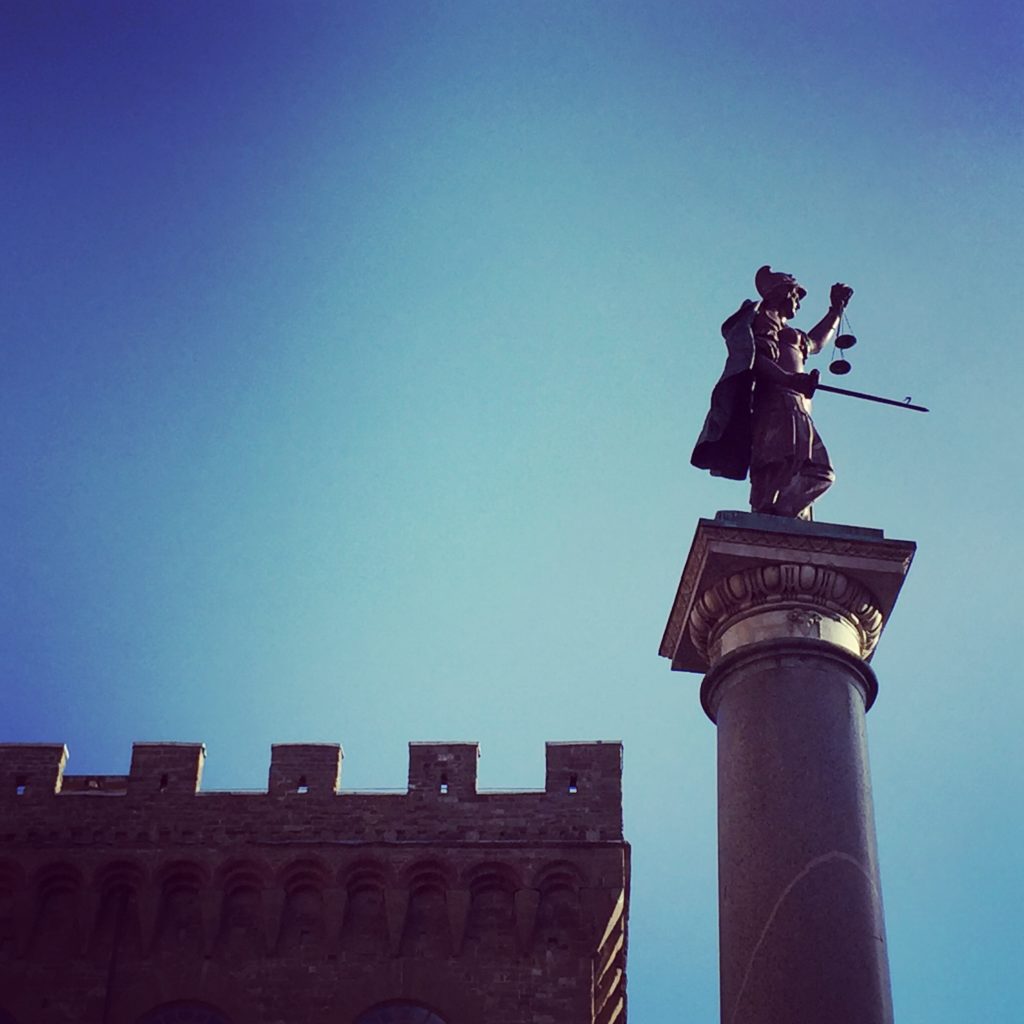
When I visited Florence again in 2011, I rounded the corner of Via Parione on my bike, turning into Via Tornabuoni where it sweeps wide around the ancient Roman column that holds the Statue of Justice, as I had done so many times when I lived here. Only this time, the great ribbon of the road from the Arno to Piazza Antinori was breathing freely, unfettered by rumbles of tires and horns of cars. It had been turned into a pedestrian-only street.
Then in 2014, I was pleasantly surprised again. The street now glistened with new pavement made from pietraforte stone from the Appennines placed in a herringbone pattern and sidewalks done in pietraserena from nearby Fiorenzuola.
The remnants of the Salotto dell Europa may have been wiped away, but the statuesque street can now be admired fully in its new car-free form. Altered irrevocably by the march of time, Via Tornabuoni is still undeniably Florence’s most elegant street, and one of the most elegant in the world.
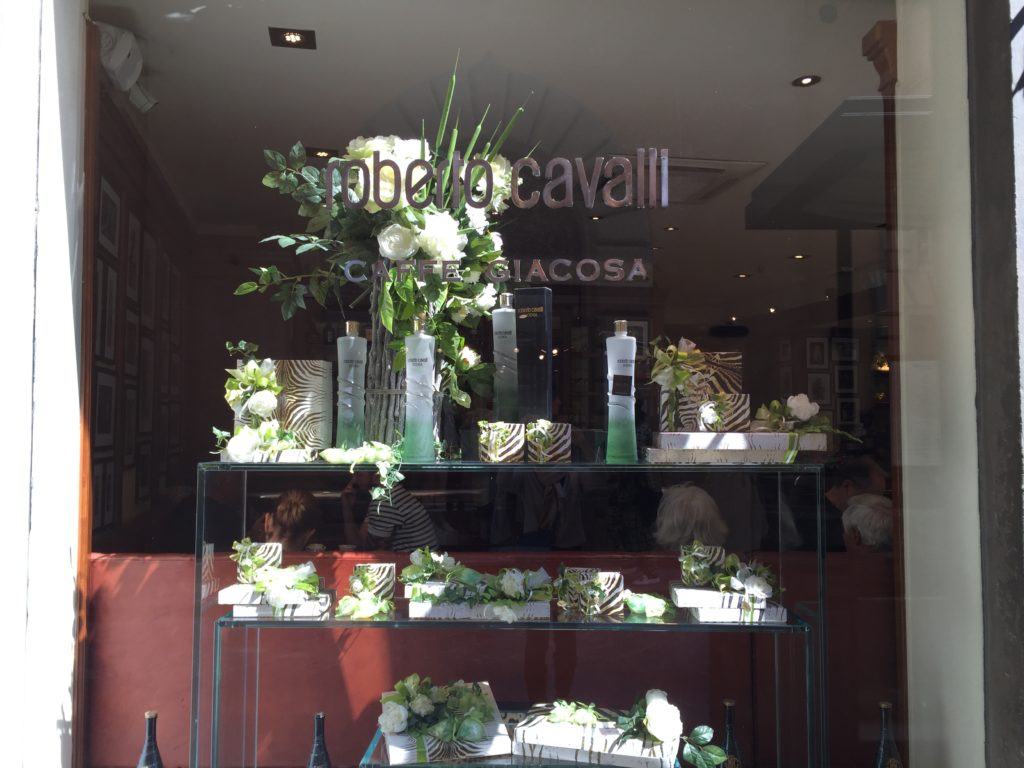
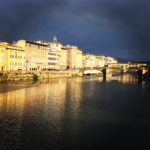

Chandi, I walk that street nearly everyday, taking pics at night etc..and never knew the history of what it was just a short time ago. It was sad to read about the businesses that are no longer there because of these big posh companies taking over. What a shame!!! thank you so much for enlightening me about its history. I will see it much differently now! Love your blog..it is so informative and the fact that you actually got to talk with Signore Bechi was amazing! Well done.
Dear Margaret,
It is true that many times we know so little about the places we live in… But it is never too late to start discovering the amazing stories behind the walls and streets.
I wish I was walking it with you Margaret, and learning more about night photography.
I’m so glad you enjoyed this piece. You know how the “list posts” are all the rage? Well, they have a place and they can be helpful but I do enjoy a more in-depth post that contains some history and culture and I so adore Florence and its history and interacting with the Florentines about their patrimony. It means a lot to me so it’s really cool for me to see that you got something out of this post.
The history is fascinating. Unfortunately this has happened in other cities as well. As rents rise the only one that can afford the “prime” space is the big multi-national designers. Unfortunately it makes the world a bit more generic.
Yes, true. And those of us who enjoy history and diverse cultures don’t like generic!
Fascinating bit of history. Makes me want to visit Florence again. Excellent piece.
Glad you liked it. Yes, it makes me want to live there and spend days researching little creative bits of history, and interviewing and writing. Sounds perfect right?
HostelDeals must certainly find the time to go here! Amazing pictures!!! I would love to se this with my own eyes! Thanks for sharing!
It is incredible that you have covered so many places. I haven’t been in Florence but my parents did and they have some incredible pictures. You’re right, it’s not like America. Some parts of Europe are incredible, little paradises of history.
I really appreciate you sharing all this knowledge with us. It makes me really sad when here in Spain they change historic buildings, which is happening a lot due to the crisis. But that is life. Did you know that many of our cities are built on top of ancient Roman cities? You should come and visit, and write wonders about that too.
You really have a gift. Keep writing and showing us incredible places =)
How nice of you Alba! Thank you
I have never seen the film Tea with Mussolini but you have sold it to me along with Florence. I am now about to make a hot chocolate, you are persuasive!
Gemma, Florentine hot chocolate (which is very seasonal– you will only get it in the winter) is divinely rich and wonderful.
Wanna try it? Curl up with it when you watch Tea with Mussolini?
It’s easy:
4 ounces dark chocolate (85% is preferable)
1 ½ cups of whole milk
2 tsp sugar
2 tbsp arrowroot
Heat the milk, (don’t boil.) Mix in the chocolate and sugar and get the chocolate melted and then add the arrowroot and mix. It comes out dense and dark, often dense enough to stand a little spoon upright in it!
A great post, love your insightful descriptions of a changing Florence/ I am so glad that one change has been positive, a pedestrian street is a great idea for that city where strolling is a MUST!
what a beautiful yet sad story. I loved reading your recount of the past and how it was and how it has changed. Sadly, progress has eliminated a lot of these historical places everywhere. It might be more prominent and clear in Florence but it is the same in Barcelona. Age old traditional hat shops and pharmacies are disappearing in favor of the large high street chain stores. I wish something could be done but in the end money prevails and when the old owners die, the heirs decide to sell it to the highest bidder. Thanks for taking us back to that wonderful historical time
Hey Chandi,
It was really inriguing. I was lost reading it.
In india which is again full of history and specially in delhi we have seen many such instances. Iconic places are being taken over by so called world barnds and it happenes every year which changes the scene completely. I miss old and iconic places which have been milestones in history.
Thanks for sharing your insigts and i cans ense the sorrow.
(BTW Chandi means silver in Hindi Language